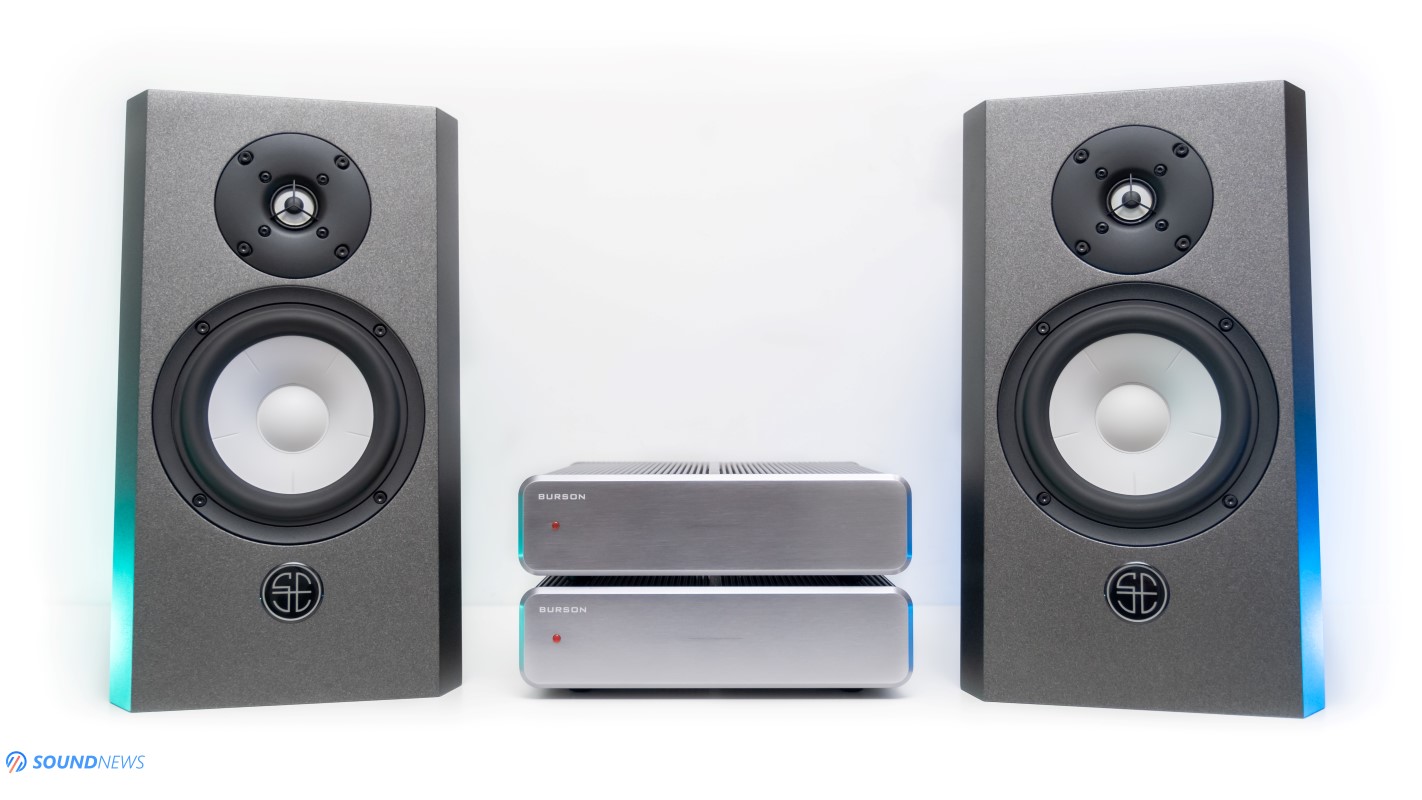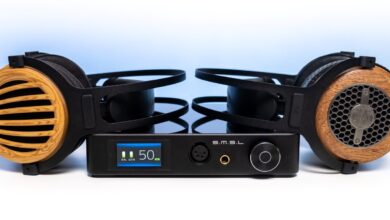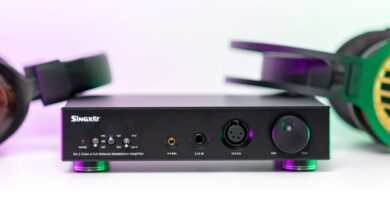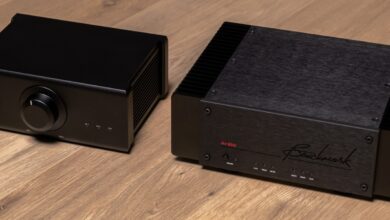Burson Timekeeper 3X GT – In Dual-Mono We Trust!
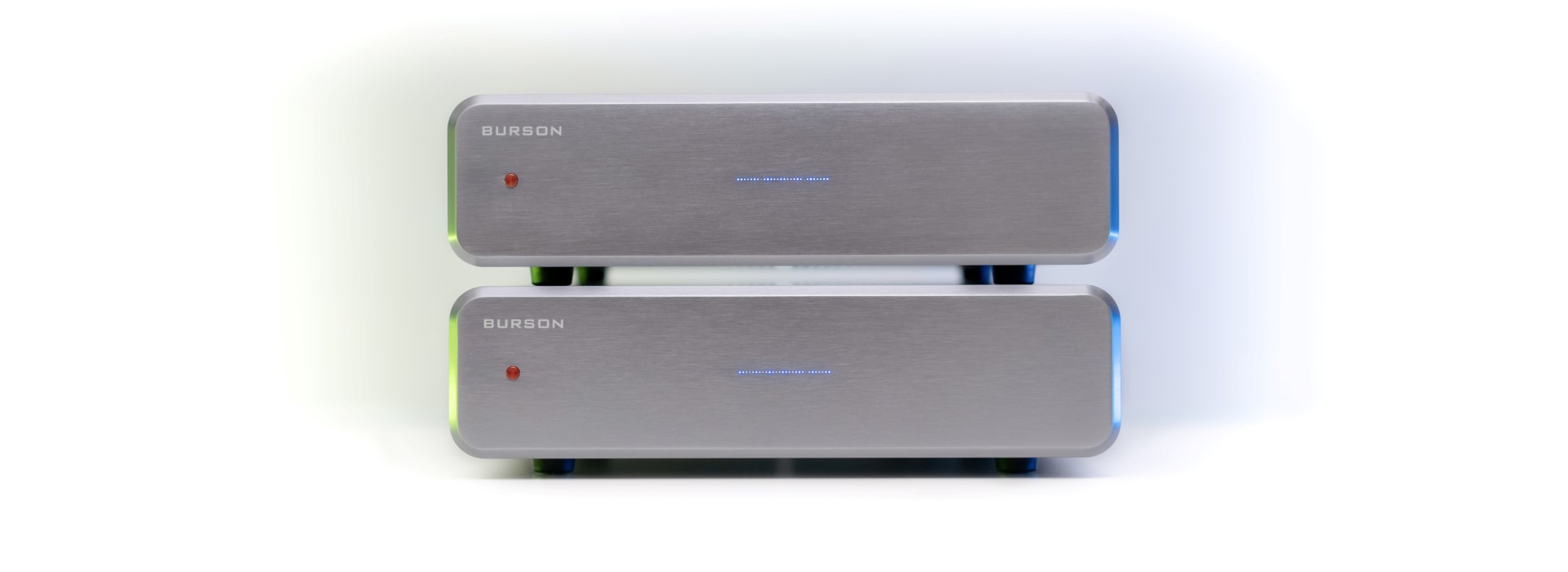
My Video Review:
After trying every single integrated and power amplifier made by Burson Audio, from the very first Timekeeper released back in 2013, up their newest Timekeeper 3i Reference do-it-all wonder box, the only thing remaining to do…was opening an old dusty bottle of wine, reclining my chair and starting a long listening session of the newest The HU album that just hit streaming platforms.
I lived a long life, I saw all and everything, I tested all the bad and good stuff, I’ve exclaimed pleasantly while poetically sipping from my glass. Out of a sudden…my door collapses to the ground, as an emissary from the Kangaroo land shouts loudly: You didn’t try them all, you mortal! Who are you? I’m asking amused to death. I’m an emissary coming from a faraway land carrying rare gifts that will unlock all the knowledge of the Universe. Gifts…what gifts?
“These are the latest creations from the house of Burson Audio, blessed by the knowledge of a team that worked for more than 20 years in the analog domain! You’ll find a higher refinement than that of a swan swimming on a lake, the full power of Infinity Stones, an Iron Man grip over loudspeaker drivers, all while being highly technical and transparent, completely disappearing from the acoustic chain”. Thank you esteemed emissary; I’m accepting your generous gifts and I will be surely testing their latest and greatest dual-mono power amplifiers in the comfort of my home.
Dual mono you say? Yes! And that’s what I find so interesting about the latest Grand Tourers. Their feature set was stripped to bare minimum for the shortest and purest signal path. There isn’t a DAC section, preamp, headphone amp or a Bluetooth receiver on board, as we are dealing with dual mono power amplifiers that have a single task, which will be completed with a greater success to anything they’ve done before. We are talking about all-discrete power amplifiers that completely bypassed channel crosstalk; we are talking about innovative Max Current Power Supplies that are removing all remaining traces of noise and of course about newly developed 210-Watt Super Chargers that we already experienced on their Soloist 3X GT and Conductor 3X GT.
These are the highest performing power amplifiers made by Burson Audio, that have the highest power ratings, the best measurements and presumably the best subjective performance. You can buy them only as a duo and I find that compelling, as I’m using dual-mono amplifiers at the moment (2x Benchmark AHB2). Knowing that Timekeeper 3i Reference was already driving well my KEF Reference 3 standfloor speakers with aplomb, while never limiting dynamics, I was beyond excited trying their best yet. Like the Soloist 3X GT and Conductor 3X GT before it, the newest member of the Grand Tourer lineage spots a few red accents on its buttons and Cool Stands, that hints about a racing spirit living within. Since this is their best attempt at high-end audio, all the bells and whistles were already included in the package. You’ll be getting two Cool Stands, two Super Chargers, two Timekeepers, all for a pretty sum of $4000, which is lower to what I was expecting. I will be testing them with two pairs of loudspeakers for a good measure and in the latest chapters I will be comparing them with my own dual-mono amplifiers, so stay tuned for that. Until that happens, let’s have a look inside their boxes.
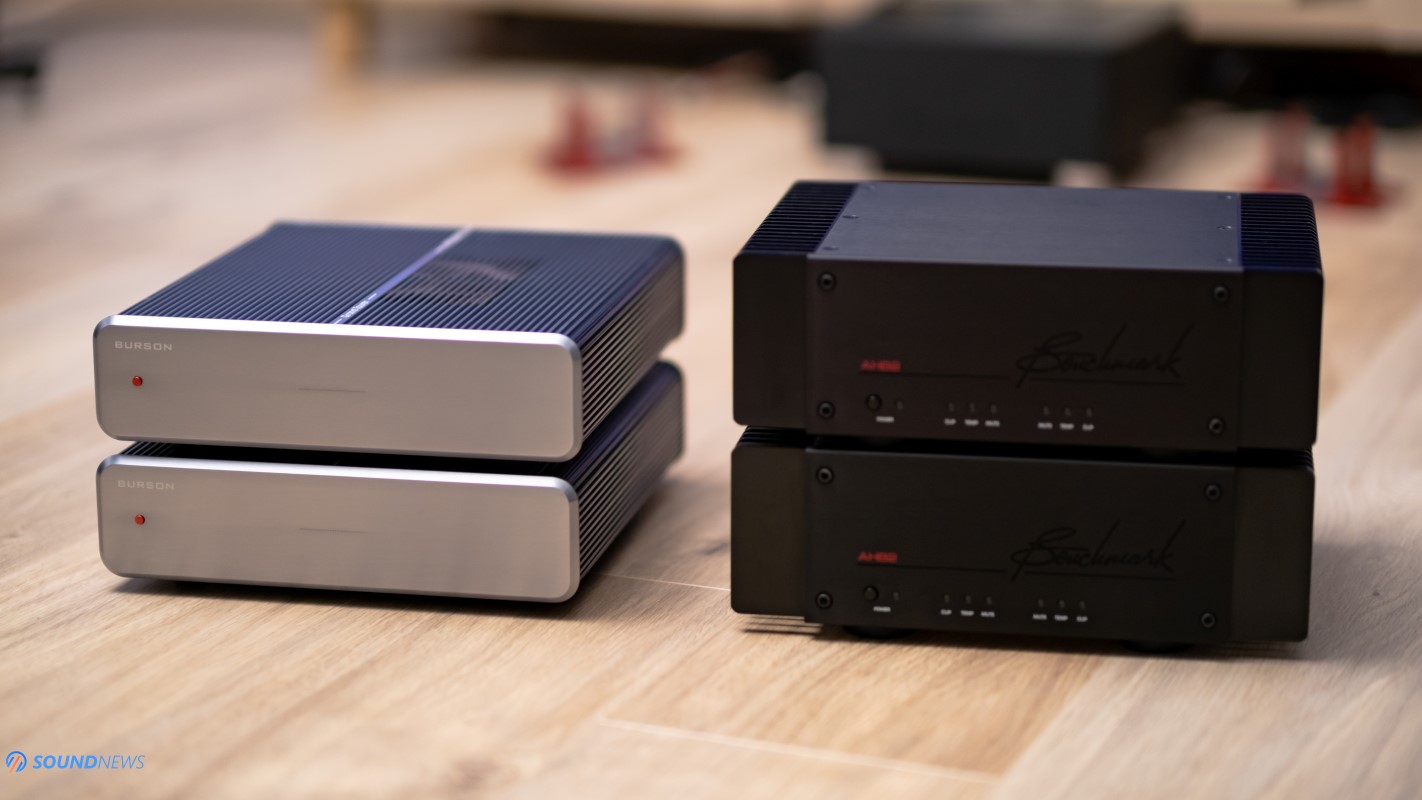
Two Beasts, One Package
A box in a box is exactly how the GTs arrived at my front door – a usual sight that should well protect the units during shipping. As all the latest Burson Audio components, the Timekeepers were nicely protected by a thick spongy roll-cage and it doesn’t matter if Ace Ventura or another crazy courier will be dropping them off, they should arrive safe and sound to your front door. A 210-Watt Super Charger can be found in a separate box and a Cool Stand that lets you use them vertically for a better heat dissipation. There’s a 12V trigger cable – just in case you’ll want to power several devices with a single remote control, two hex screwdrivers are also included, a JRC op-amp and a mini fuse are everything you’ll find in there. You won’t get a remote control with power amplifiers as there’s literally just a single button on its front panel and you won’t find a remote with these units as well.
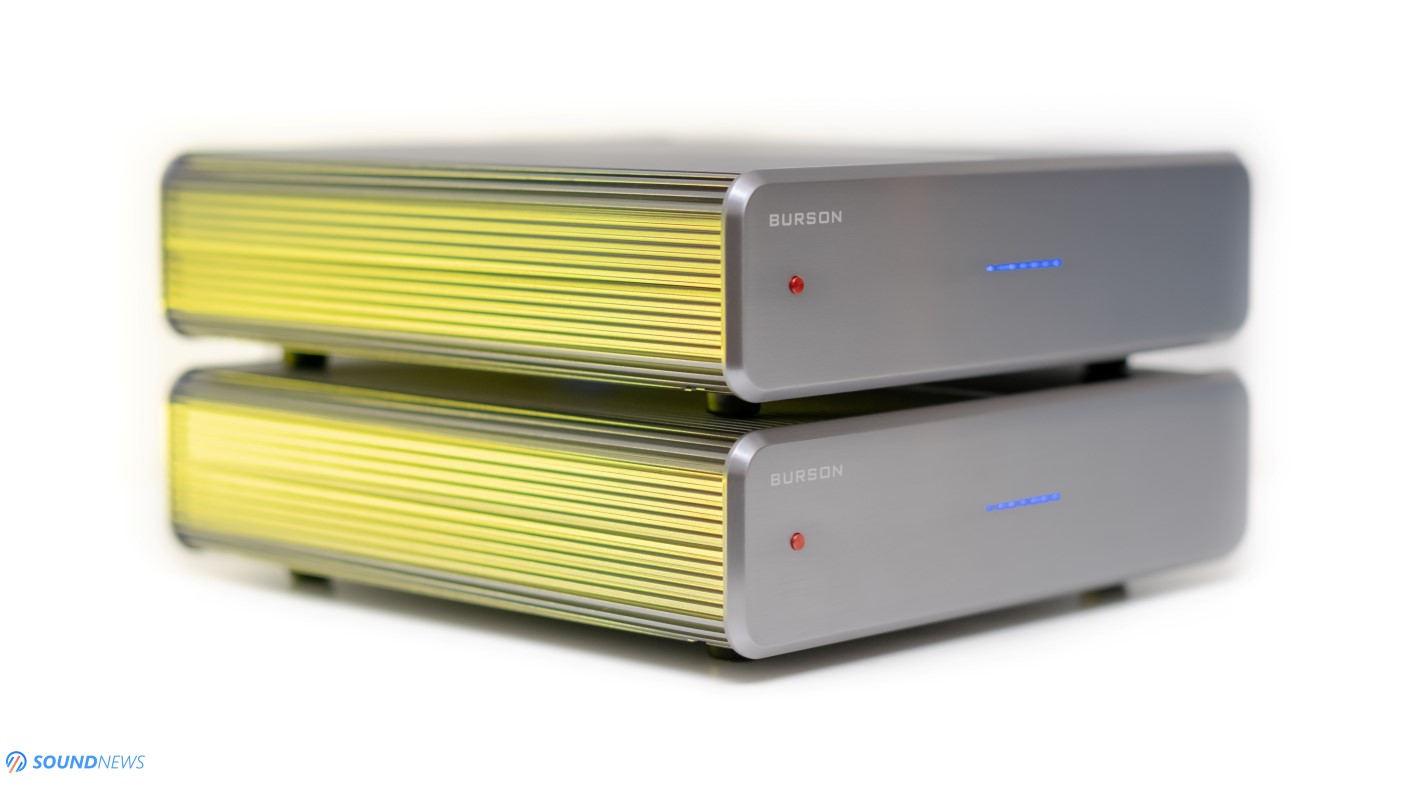
Design & Build Quality
As their name states, these are their third generation Timekeepers that lost a few pounds, shrinking their cases as much as possible, as we’re no longer getting heavyweight linear transformers, exchanging them with Max Current Power Supplies. Burson started slowly updating the look of their latest devices, retrofitting them with Cool Cases that tripled their surface area, improving heat dissipation and service life. On the outside they look similar with their Soloist 3X GT sans that advanced UI, display and all the I/O, but this time around we got taller rubber feet and bigger windows around the Noctua fan, for a better heat dissipation around the power transistors. Since their internal power supplies and amplifier stages are working at their maximum, Burson adopted active cooling with the help of 120mm Noctua fans, that gave them freedom to further push their performance compared to their older siblings as Timekeeper 3i Reference. Noctua fans aren’t new to me, as I’m using them for more than a decade in desktop PCs and I’m currently using a Noctua NF-A14 fan in my Corsair One i160 for its silent operation. Combining a resonance-free enclosure with the quietest fan money could buy, you can barely hear them working in a silent environment, as fan noise sits below ~25 dB. As a matter of fact, an empty recording studio has over 30 dB of ambient noise, meaning that Timekeeper 3X GT would be quitter than the background ambiance and I can vouch for that, as from a three-meter distance, I cannot hear them working. I can perceive them only when I’m approaching in their close vicinity.
Burson hid all the screws on their back panels, for a much cooler look, exactly as they did with their newest devices. Naturally, their cases were milled on CNC machines, exposing their raw aluminum look. Their rubber feet are now taller, so they will get cooler when sitting horizontally on a table. For even cooler electronics and for a longer service life, I recommend using their Cool Stands for a much better heat dissipation. I’m using Cool Stands on Soloist 3X GT and Conductor 3X GT and I find them reliable and good looking. With Cool Stands you won’t need a dedicated rack as you can place them directly on the floor and you shouldn’t worry about leaving a few marks, as a thick layer of anti-slip scratch-resistant silicone lining will protect them from any harm.
Having small sized cases (255 x 270 x 70 mm) and weighting only 5 Kilos (11 lbs) a piece, I find them small, cute looking and so lightweight, that you won’t have a problem fitting them into petite stereo setups. Overall, they follow the minimalist look of the newest Burson devices, they scream high quality craftsmanship, everything feels tight and doesn’t wobble at all. Their raw aluminum look is interesting to look at and I certainly like them more to their older siblings.
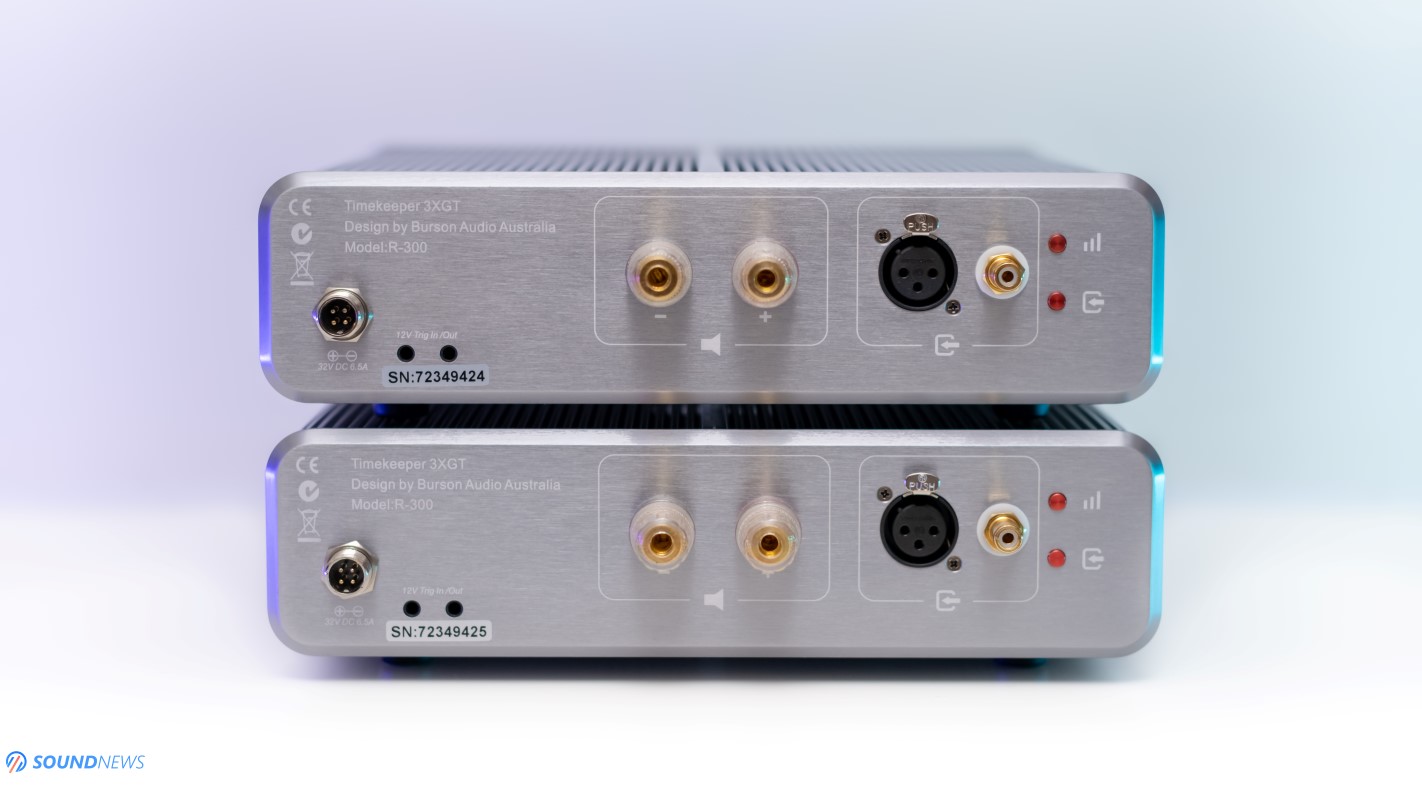
Controls & Connectivity
Running as power amplifiers only, you won’t find remotes and volume controls with these. There’s only an On/Off button on their front panels and several LEDs will be showing their working status. On their back you’ll find a DC power socket, two 12V triggers – in case you want to control your entire setup with a single remote, a pair of speaker terminals, RCA and XLR analog inputs and two buttons that lets you switch their gain and select the RCA or XLR input. After playing for a few days with their gain, I definitely prefer the high-gain setting that triples their power output. Since I find them dead-silent on high-gain, I don’t see the point of using low-gain ever again.
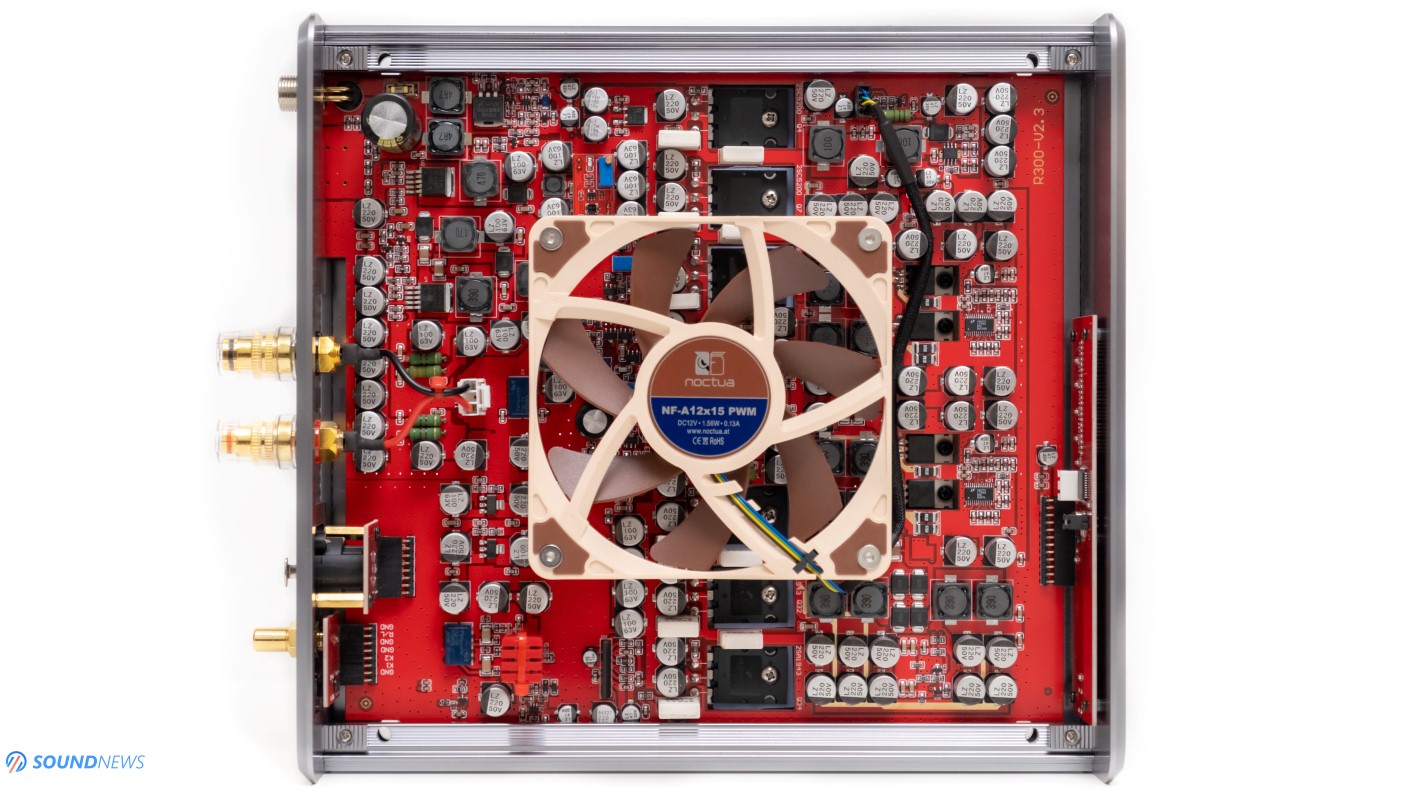
Under the hood of Timekeeper 3X GT
No compromise power amplifiers don’t need additional features. These are not Jacks of all trades and masters of none. These were conceived as the last pair of amplifiers that you might need. With more than 20 years of experience in the analog domain, I believe Burson Audio already received the blessing of the audiophile gods, crafting higher grade amplifiers year after year, coming close to perfection with their latest units.
You won’t see an external switching mode power supply that Timekeeper 3i Reference came with, swapping it with a pair of 210-Watt Super Chargers that are lowering the incoming noise as much as possible. Their secondary tasks are doubling charging frequency of power capacitors, resulting in a more impactful sound, that is bigger and deeper sounding. After the incoming DC power is cleaned up and energized by the Super Chargers, five sets of Max Current Power Supplies (MCPS) are following that are raising the voltage frequency from 50-60 Hz to 170 kHz, pushing the noise floor far beyond human hearing. Their low output impedance ensures abundant and instant energy on the spot for its power transistors. The power intake is being filtered and revitalized twice and of course that will leave a big mark when reference recordings will start playing.
While Timekeeper 3i Reference already used moderately big transistors, the GTs are using the biggest transistors I’ve seen on power amplifiers. I’m spotting six massive FJL 4315-0 NPN (Epitaxial Silicon) Transistors that were developed for high-fidelity audio applications. A single transistor can dissipate up to 150 Watts of power and deliver 17 Amperes of current. A few smaller transistors are also located in between the big ones, but I can’t spot their maker as the Noctua fan is blocking my sight. Obviously, there are hundreds of many other discrete components, including a single V6 Vivid dual discrete op-amp that can be swapped with a V6 Classic dual – if you are into a warmer and smoother sound.
On high-gain these can output up to 180 Watts per channel in 4 Ohms and 110 Watts in 8 Ohms, for higher dynamic swings they can provide up to 210 Watts per channel in short power bursts, so there is definitely a lot of power on tap.
If you love rolling op-amps you can do that too, any dual op-amp should work well, starting with V6 Classic, you can try any Muses, Sparkos, Staccato, HairballAudio or Orange Amps discrete op-amps, just make sure that you’ll be using dual op-amps, otherwise you might fry them.
You won’t find a digital board, a Bluetooth receiver, wireless antennas or additional features, as these are pure blooded power amplifiers that have a single task: pushing and pulling the drivers of your loudspeakers.
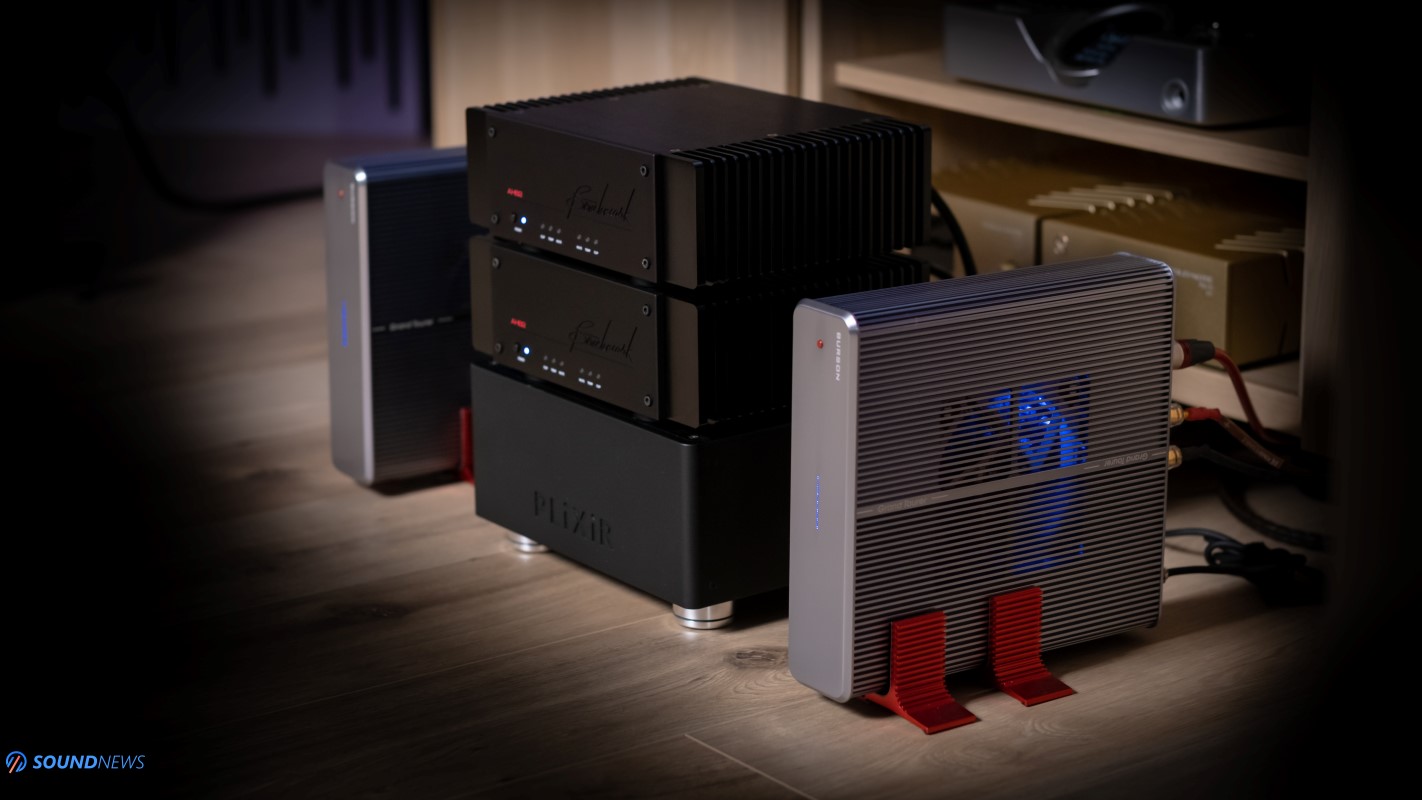
Test Equipment
Timekeeper 3X GTs were used with two pairs of loudspeakers: with my daily driver KEF Reference 3 and with a power-hungry Sound of Eden Crescendo UNO that so far worked great only in dual mono setups, with a lot of power under their hoods.
I will be using either a Chord Dave working as DAC and Pre or a Gold Note DS-10 Plus + PSU-10 EVO working as a streamer, DAC and Pre. Okay everyone, I think I’m ready for some well-deserved music, so let’s hit some eardrums!

Sound Performance
I. Preliminary Sound Impressions
Exactly nine years ago, we were reviewing the very first Burson Timekeeper power amplifier on our sister website and since we wanted to extort the last drop of performance, we bridged two units trying to get more life out of a pair of Dynaudio Contour S1.4 and Raidho S2.0. Years passed by and we tried every single Conductor, Soloist and Timekeeper under their banners and I can say that the family resemblance is very strong with Burson Audio. Some companies are trying to reinvent themselves, going with courageous moves in terms of looks and sound tuning, while other are sticking with family traditions and it seems that Burson prefers the later and I get it why.
While constantly trying to push the concept of All-In-One, packing as much tech as possible in units like Conductor 3X GT and Timekeeper 3i Reference without trying to limit their performance, for no particular reason, I’m more excited when their units have one single feature and goal: providing the absolute best performance with little to no compromises. In every third review of mine, you can spot a Burson Soloist 3X GT, as slowly but surely it became my daily-driver headphone amp at our HQ. It reeks bad attitude when music starts playing, it’s incredibly dynamic and impactful, yet clean and transparent enough that I didn’t see the point in keeping the Benchmark HPA4 anymore.
Timekeeper 3X GT is a similar product that instead of driving difficult headphones, will be powering passive loudspeakers with an iron fist. There isn’t a remote control, a user menu or a complicated digital board. The GTs are pure hearted power amplifiers with just a set or XLR and RCA inputs and a set of speaker outputs, nothing more and nothing less. This is the best part about them, as at this level people already have higher grade DACs, streamers and preamplifiers (myself included), so we could extract everything they have to offer. In just two years I tried 13 different power amplifiers, some of which could be used as integrated amplifiers, last one being the Topping LA90.
After only a few days of burn-in, I could feel that Timekeeper GT mono amps were doing a few things differently to anything that passed through my hands. I don’t have a conclusive explanation to what followed with them at the helm of my stereo, but with a great deal of confidence I will mention that I don’t remember getting as much bass rumble, texture, extension and impact as I’ve got with these. KECES S300 ($3000), Kinki Studio EX-M7 ($2600) and Benchmark AHB2 ($3000) were already impressive sounding, always putting a higher-accent on the low-end delivery, but the Timekeeper GTs were even scarier creatures, adding more rumble into the lowest octaves. I’m pretty sure that these could even cure a few ethereal sounding bookshelf speakers that lacked body and low-end extension.
A minute later and I was already mounting the Sound of Eden Crescendo UNO bookshelves for prime time, which I find technical, fast and detailed sounding. The only things that UNOs aren’t doing so well are sub-bass extension and midrange presence. I’ve immediately swapped my daily driver Benchmark AHB2 mono amps with two Timekeeper GTs and lo and behold! The vocal performance got sweeter and deeper sounding into the mix, there was more bass rambling around the room, these babies sounded fuller-bodied than ever before and I felt them singing sweeter tunes, like experiencing them for the first time.
These weren’t only bringing the thunder with each passing bass note, as more air could be felt in between the notes as well, like an additional woofer magically appeared on their cabinets. With the GTs, everything felt snappier, punchier and bigger sounding compared to a pair of Benchmark AHB2 ($6000) bridged together. AHB2 aren’t exactly massive sounding on their own and everybody knows their weakness is soundstage & midrange presence and once again, Burson proved that their family traditions didn’t fade away. I’m again getting that legendary sub-bass and midrange presence that the first Timekeeper was known for, with the exception that I’m getting more power and a clearer, more technical sound. Chapeau Bas dear emissary! Rare gifts indeed.
Crescendo UNO are using (stiff) ceramic drivers and can sometimes sound thin and boring with the wrong amplifiers, they certainly need a higher power intake and a warmer sounding source and/or amplifier. I’ve experienced a very different sounding Crescendo UNO with two captains at the helm of my setup. My affair with them was so different, that I almost wanted to go back and re-write portions of the UNO review, especially where I called the ultra-linear and lean sounding, as that wasn’t the case anymore. Once again, I am being smitten by how important system matching really is, as when everything works in harmony, I will be getting a great tonal balance and all the cleanness I can wish for.
Another surprise for me was…drum roll…power output! My KEF Reference 3 aren’t particularly easy to drive and the same can be said about the Crescendo UNO. KEFs are using aluminum drivers and UNOs ceramic drivers, both of which are very stiff and need juiced watts for better dynamics and control of their diaphragms. While impressive on the technical level, the latest Topping LA90 wasn’t able to drive any of these loudspeakers to what I would call as optimal or highly entertaining. It was making them ruler flat, maybe too flat for my taste, to a point of becoming dull sounding. I don’t know for sure how Burson tuned their power transistors, as at 180 Watts in 4 Ohms and 110 in 8 Ohms, I should be close to their upper power limits and yet at around ~65 out of 100 on the Gold Note DS10 Plus, Reference 3 were already way too loud. There’s a massive power reserve on tap, almost in line with two Benchmark AHB2 which are providing 380 Watts in 8 Ohms when bridged together. What was 62 out of 100 with two AHB2, became 65 on the GTs and around ~80 with the regular Timekeeper 3i Reference. Knowing how inefficient both my loudspeakers are, I believe these should drive pretty much anything with a lot of power to spare.
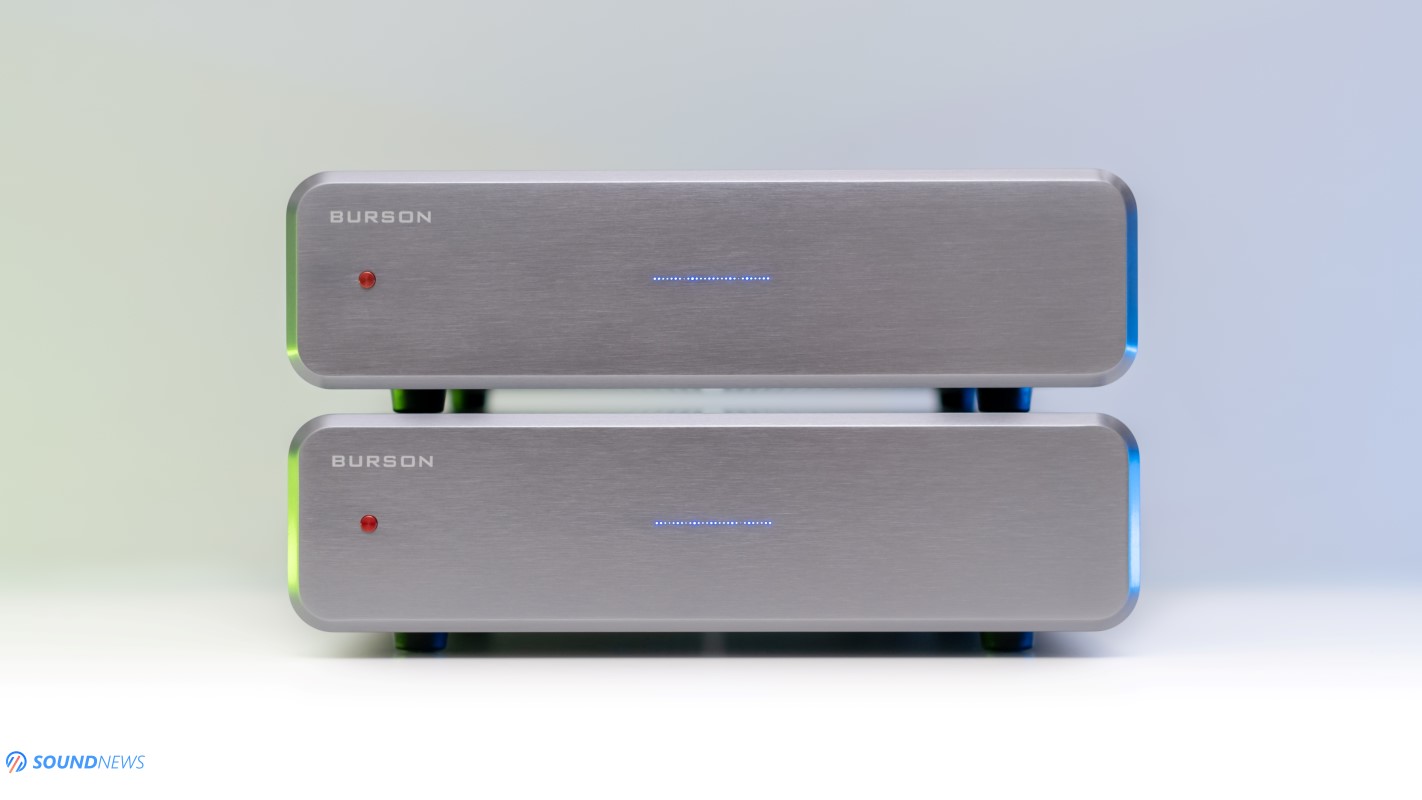
II. Noise Floor
I’m putting this chapter in all my integrated and power amplifier reviews, as some units are noisier than others and only a handful delivered a noiseless performance at both low and high volumes. The latest amplifier releases are already putting a higher accent on measurements such as THD + Noise and you can get decently clean sounding amps even below $1000 without too much trouble (Topping LA90 is a very good example). Get a vintage amplifier for cheap and you might get unwanted surprises as transformer hum, hisses or plain pops and crackles.
The Uni-Q driver arrays of the KEF Reference 3 are extremely sensitive to any kind of noise, especially the 1” vented aluminum dome tweeters can pick up residual noise and sniff out all the bad stuff happening in the downstream equipment. They picked a higher noise floor on multiple amplifiers by now and luckily, Timekeeper 3X GT are not one of them. Even without comparing them to my former integrated and power amplifiers, it was clear to me that I’m dealing with high levels of transparency. Going louder to my usual listening volume with music on pause, I almost touched those tweeters with my elven ears and still, I couldn’t detect low-intensity hums, there weren’t nasty gremlins playing in the background. It seems that Burson’s Max Current Power Supplies are working as intended and their newly developed 210-Watt Super Chargers are giving a massive helping hand. Although I’m still using a passive power conditioner from Plixir Power, there wasn’t a clear difference with or without the EliteBAC1500 in the chain, as it usually happens with entry to mid-level integrated / power amplifiers. Timekeeper GTs were dead silent with both the Reference 3 and Crescendo UNO and that makes me quite happy.
A few days later, I pushed that volume even higher and unsurprisingly, both loudspeakers were still sounding clean, without getting traces of distortion or other nasties. I’ve experienced quite a few noisy integrated amplifiers that were raising distortion (all the latest SMSL amplifiers like DA-8S, DA-9, AO200 and SA400 were doing it for me) but luckily, I’m not getting any of that with the Timekeeper GTs.
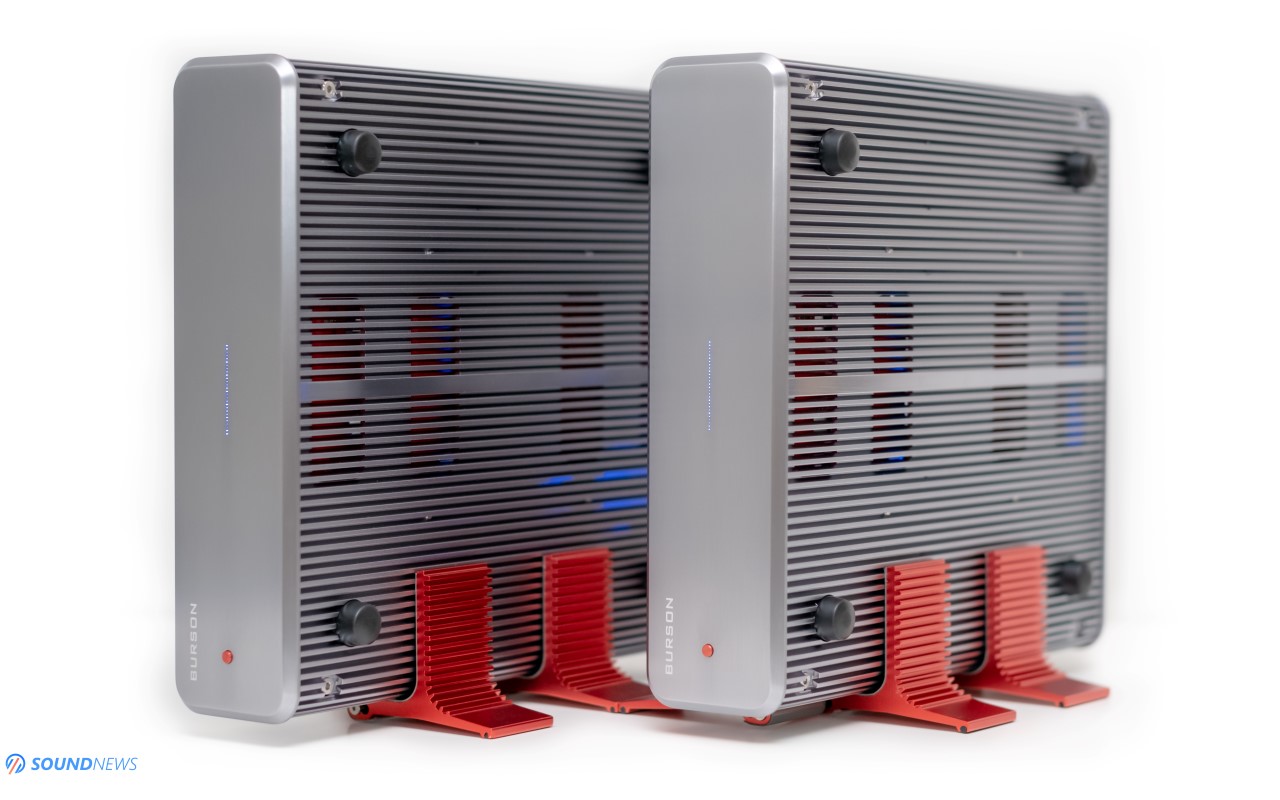
III. Soundstage & Imaging
You know what’s the easiest way in improving the stereophonic imaging and widening the soundstage? You’ve guessed it! By lowering the channel crosstalk as much as possible. Crosstalk is a phenomenon in which a signal transmitted to one channel creates an undesired effect in the other channel, merging both channels little by little, especially at higher volumes. Crosstalk is caused by undesired capacitive, inductive or conductive coupling from one channel to another one. In much simpler words, a small portion of a channel leaks into the other one, some stereo amplifiers have a higher crosstalk – a fuzzier imaging, while others have a much lower channel crosstalk across the entire frequency range – a sharper stereo imaging and a wider soundstage too. However, you can have a zero-channel crosstalk and that’s possible only with mono amplifiers, as an amplifier will be driving your right loudspeaker and another one will be driving your left loudspeaker, without interfering with each other. Mono amplifiers by design do not have a channel crosstalk. When you go with mono amplifiers, you are bypassing the nastiest distortion that could occur in amplifier designs, additionally you are getting a better driver control, which seems like a win-win situation.
Considering that we are dealing with mono amplifiers, the moment I swapped the Timekeeper 3i Reference with two Timekeeper GTs, apart from a much higher power output, there was an immediate change in imaging, as every note felt sharper, clearer and more defined in its own bubble of air. Every note was clearer and I could sense a longer decay of each passing note. Instead of instantly disappearing, you hear them slowly fading away into the shadows. On live records that effect was so apparent, that I could count the number of people chanting together. Another highlight of the GTs versus the regular Timekeeper 3i integrated, was the scale of the music that improved substantially. The GTs were considerably wider, deeper and taller sounding versus the regular Timekeeper 3i, these were even airier sounding compared to my daily driver AHB2 amplifiers which are costlier as well. While preserving a very defined picture, AHB2 weren’t exactly massive sounding on their own. When the GTs took their place, I felt sitting in a bigger room filled to excess with sounds. In all seriousness, this is one of the largest stages I’ve experienced lately, outperforming even the KECES S300 and Kinki Studio EX-M7 power amplifiers.
When Exit Music by Radiohead (Qobuz / Tidal) started playing, Thom’s voice was no longer fading away in micro-seconds. He was leaving a trail, almost like an echo that wasn’t as obvious via the Timekeeper 3i integrated. Even if I didn’t master echolocation (yet), I’ve felt the size of the room where this tune was recorded, sensing his voice bouncing off the walls at a certain point. Suddenly, a simple track, became a binaural recording, as I could feel his voice traveling easier around the room. The spatial cues were sharper and more defined, everything felt a little more focused and real sounding to me. Even if his vocal cords were overpowering guitar vibrations, I could still hear them loud and clear as these weren’t overlapping the notes on top of each other. Besides getting considerably more power on tap, the biggest gain was definitely a zero channel crosstalk that unfolded the scale of every track. If something was meant to sound massive and deep reaching, then you can always count on their ability to spread their wings and deliver the full beauty of that track.
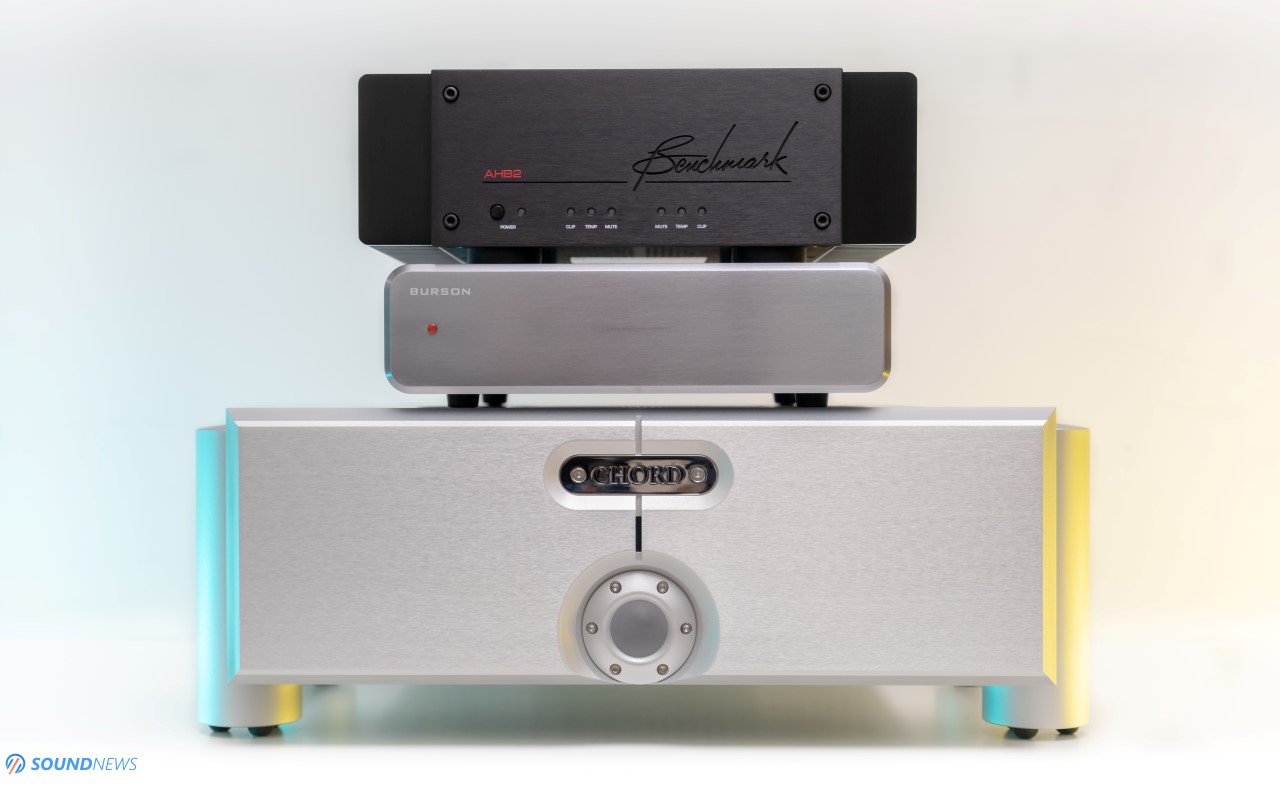
IV. Transient Response
I have something to confess to you: I wholeheartedly dislike slow, polite and mellow sounding amplifiers. Such units are putting me to sleep and are boring me to death, I will never review such amplifiers. To me, engagement factor and higher dynamics are some of the most important aspects I’m looking in world-class amplifiers. Even without any kind of burn-in, Timekeeper GTs revealed themselves as incredibly energetic and alive. I don’t get how such small, lightweight and compact units, can sound as impactful and mean in the lowest octaves. Seriously now, from where that earth-shattering energy comes from? I’m currently having a few power amplifiers that came for a review, including a power amp that costs about four times as much as the Timekeeper GTs and what’s more curious is that I’m not getting the same bottomless and deep rumbling bass notes with that unit. I can’t hype things to the stratosphere, as I’m trying to remain balanced in my writings, but I simply cannot deny all the punches that Timekeeper GT landed on my chest so ferociously once electronica music started playing. Sound Of Eden Crescendo UNO are incredibly clean and technical sounding, but they are lacking nerves in the lowest octaves and I don’t find them full-bodied with most amps. After connecting them to the Timekeepers, as their names suggested, these were better controlling UNOs diaphragms somehow improving their timing, while pushing bass notes higher to the surface. From linear and almost polite sounding loudspeakers, Timekeeper GT made them much more enjoyable to a point of becoming fun, adding a higher force in the bass, while planting more seeds in the midrange department. I no longer find them lacking bass texture and weight and I no longer find them ultra-linear. While I can’t say that I’m dealing with an overly-warm or ultra-linear amplifier, it definitely has a character of its own, as there is a little bit more energy in the bass, more to my own amplifiers and a little more to the units that I’m still testing.
If you love bass and everything that has to do with it, then Timekeeper GTs will impress you even without any burn-in. From the moment you’ll power them on, there would be more bass presence in the room and that was felt just like that (snaps fingers). Other highlights of the GTs and of many Burson made amplifiers are their need for speed personalities. I called them lightning fast so many times now, that I see no point in going with the same description, but you get my point. Timekeeper GTs are hyper cars from a solid-state amplifier world and you’ll definitely feel that in an instant. They will keep up with double drums, with quick shifts in dynamics, with fast modern tunes, with anything, really. I experienced slower sounding Class-AB amps many times before, but GTs are refusing hitting the brakes!
While Kinki Studio EX-M7 and Keces S300 were no slouches in this department, always sounding fast, snappy and impactful, Timekeeper GTs dialed-up the speed and kick into my chest to eleven! With loudspeakers as KEF Reference 3, Sound of Eden Crescendo UNO and Natural Sound NS17 (at a friend’s place), I experienced a really good driver control, impact into the chest and one of the highest mood lifting performances.
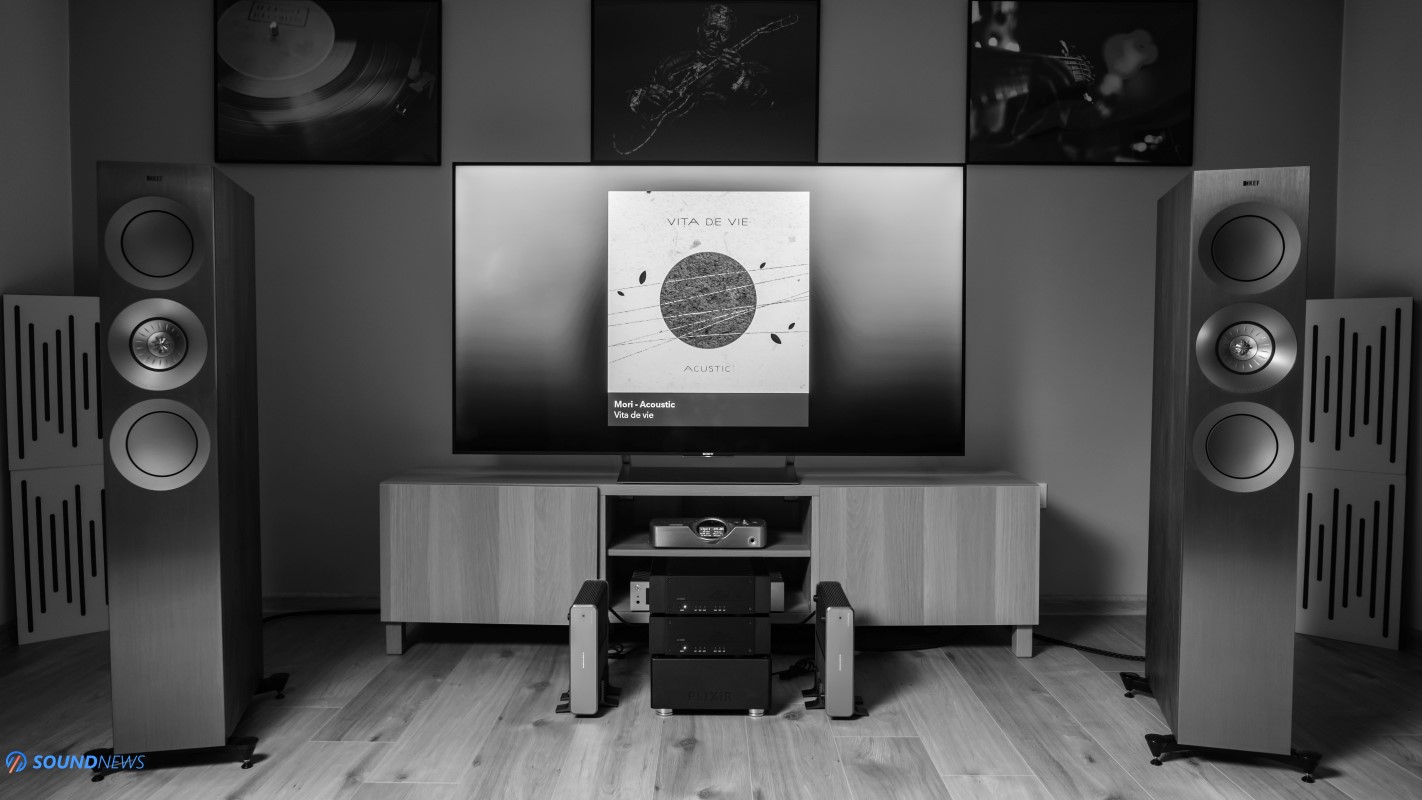
V. Detail Retrieval
If you did your homework on Burson Audio, then you already know that these guys are serious when building no-compromise amplifiers. With all due respect to everything they released so far, I see them as legendary amplifier builders, more than anything else. Advanced audio is exactly what they are doing and it’s part of their motto. They recognize performance bottlenecks in traditional designs and overcome them with new engineering approaches, all for a single goal: achieving a better performance with each release.
A few years ago, they developed Max Current Power Supplies (MCPS) that bypassed limitations of switching and linear power supplies, increasing their working frequency to 170 kHz. We can’t hear past 14-20 kHz depending on the age and all the noise happening past that point is way above the human hearing threshold. They didn’t stop there as newly developed 210W Super Chargers are converting noisy AC power into clean and ultra-quiet DC power, without raising the impedance that could interfere with the power flow. Last, but not least, they completely discarded limited op-amps and went with discrete components. There are six oversized transistors, a few smaller ones, a single V6 Vivid discrete op-amp, all routed in a shorter signal path and everything combined is telling me one thing: Timekeeper GT are incredibly clean sounding amplifiers, some of the cleanest I’ve come across. The cleanest amp I experienced so far is the Benchmark AHB2 followed by the Topping LA90. Timekeeper GT are following a similar path, as in a direct comparison…I couldn’t tell them apart. I could feel the voicing behind the GT in less than a minute, since I found them harder slamming in the lowest octaves and by a hair sweeter sounding in the midrange. Burson outdid themselves once again as I find them highly resolving and detail-oriented units.
In this regard, Timekeeper GT surpassed my former integrated and power amplifiers with the exception of the Benchmark AHB2. They outperformed a Hegel H190, A Cambridge Audio Azur 851A, a Kinki Studio EX-M7 and a KECES S300, all of which were already impressive, but not as clean sounding.
These never raised the noise floor to dangerous levels, there’s a zero-channel crosstalk and rocking a higher signal-to-noise-ratio versus their former amplifiers, good luck finding traces of distortion, as you will be listening to the limits of your downstream equipment. Living with clean sounding amplifiers for a while now, I am not easily impressed by new challengers and yet, Timekeeper GTs were one of those amps that were giving me Aha moments once very often. I have the highest respect for audio components that aren’t adding distortion and noise, as with such units I will be listening to the truth and it seems that the latest Timekeepers can be included into that short list. There is one thing that I like more on the Timekeeper GT compared to my Benchmark AHB2 mono amplifiers and that is how organic and weighty they can sound in a direct comparison. There is a little bit of dryness that lacks body, naturalness and finesse on AHB2, but that wasn’t happening on Burson made amplifiers. There’s indeed some of that all-discrete sound that felt denser, fuller-bodied, easier going and more effortless, which made them a pure joy to listen to.
The next sentence will sound weird to you, but their transparency was also tested in a revealing headphone setup, with a pair of Hifiman Susvara headphones. Yes, headphones! But make no mistake, as Susvara is not your typical planar headphones. They need more power than my KEF Reference 3 and Sound of Eden Crescendo UNO for the same measured SPL. With Susvara, I’m completely bypassing room acoustics, so I could hear everything an amplifier could deliver and I’m again having Deja-Vu moments, as Timekeeper GTs are going neck and neck with the Benchmarks when it comes to cleanness and transparency and for me, that was more than enough.
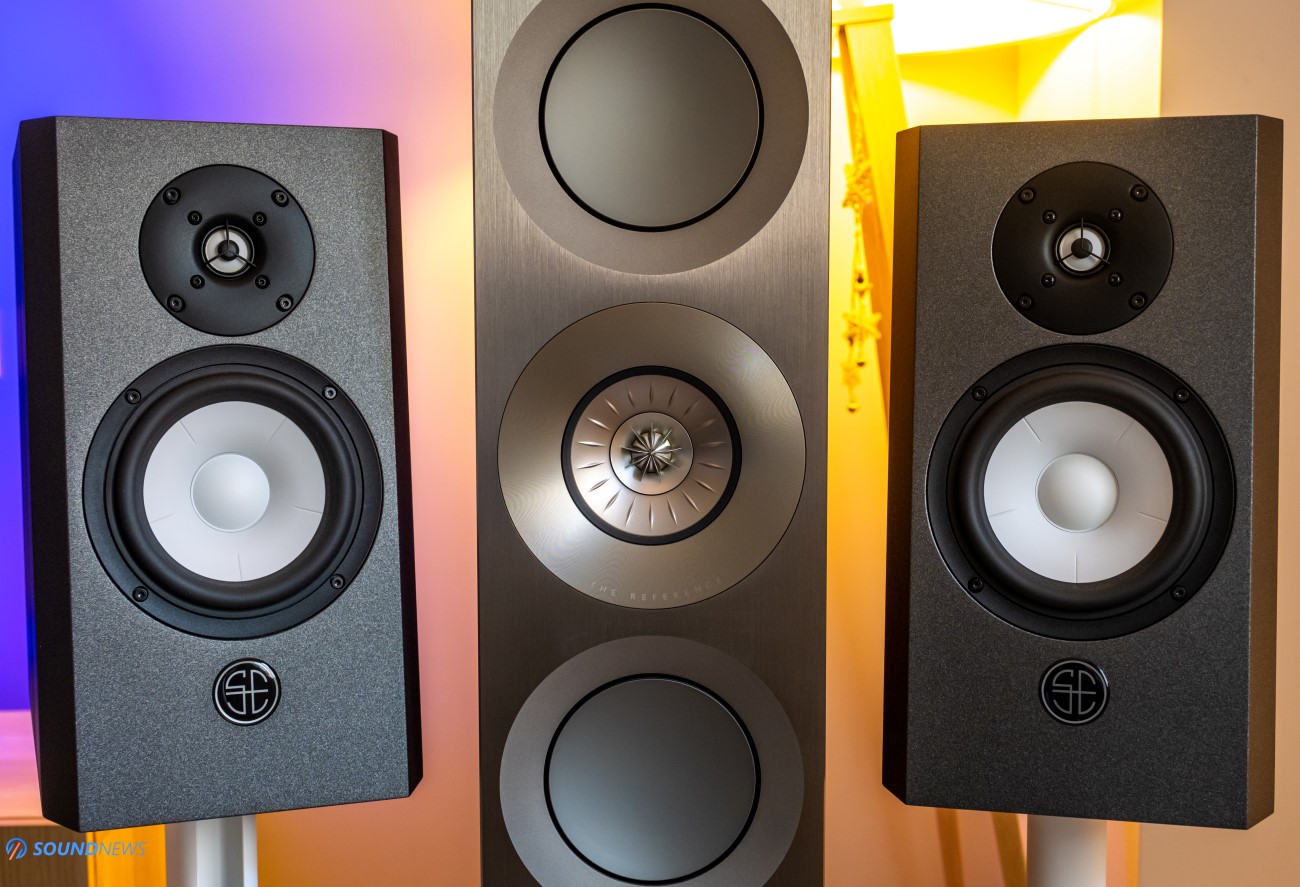
Frequency Response
VI. Bass
When I just powered them up, even without any kind of burn-in, the GTs rendered an immaculate sub-bass and mid-bass delivery. The way these sounded with electronica and bass intensive tracks was pure madness mixed with Techno Viking levels of raw energy. These worked hard on my chest, these went down to the lowest octaves, easily sustaining longer bass notes while decaying them smoothly and naturally. I found them effortless and controlled when a higher bass output was called for, they were layered and detailed at the same time. If you care not only for the quantity, but also for the quality of the bass, then I don’t think you can get better amplifiers anytime soon. Mid-bass was powerful, fast and punchy sounding, I spotted some easiness and flow of Class-A amplifiers, even if I’m still describing a Class-AB amp that spits a few Watts in pure Class-A. The whole bass region felt elevated by a little and that will have a positive impact on bookshelf loudspeakers. They might even bypass the need of a passive sub-woofer. Besides the GTs, I have a pair of Benchmark AHB2 amps ($6000) and a much higher priced Chord Ultima 5 power amp ($15900) at my disposal, both of which couldn’t match the tremendous energy that was hitting my chest when GTs started playing. While on paper Sound Of Eden Crescendo UNO aren’t touching the lowest octaves, I felt them stronger sounding than before, the whole bass region became playful and authoritative, as I don’t remember getting as much bass from this particular set of speakers.
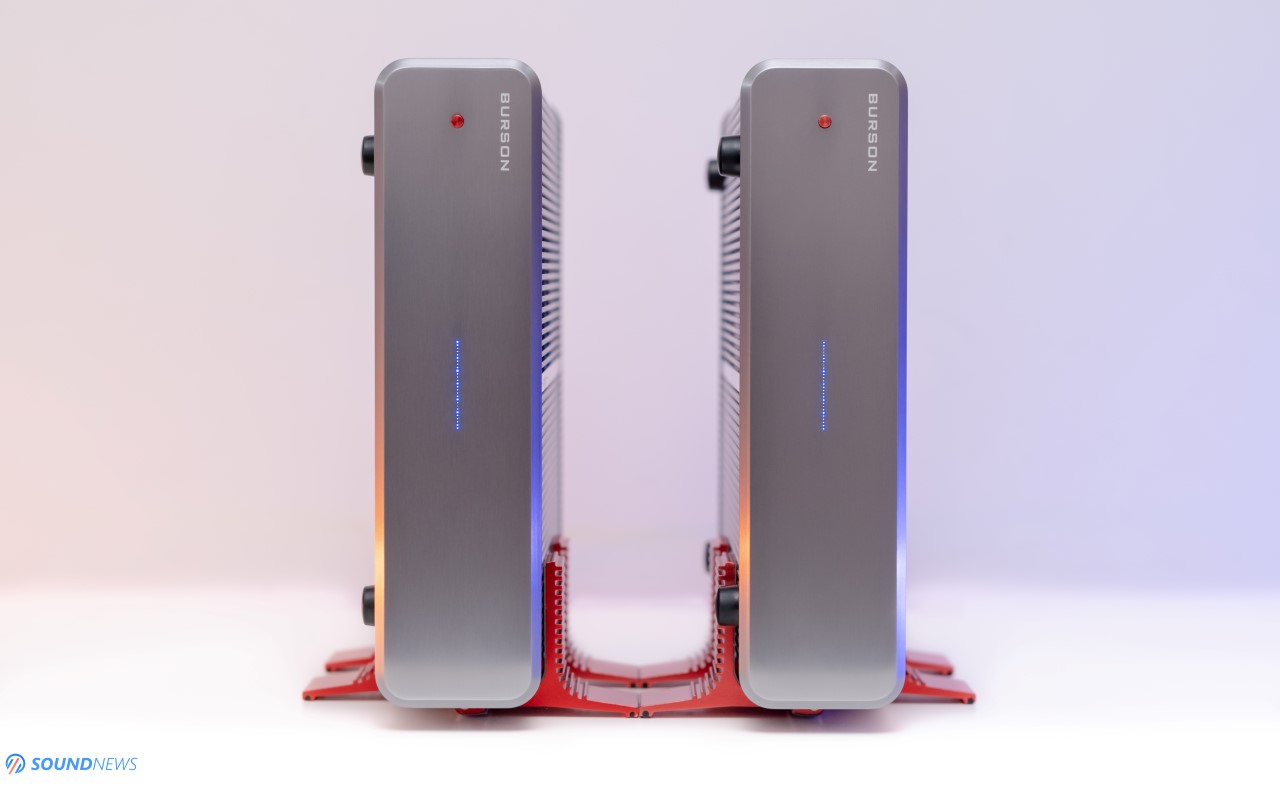
VII. Midrange
My own AHB2 power amps are lacking warmth and sweetness, as these weren’t made to intervene with the musical signal in any way. Sadly…engagement factor is switched to off position when I’m playing music via AHB2. While everything feels cohesive and right from the get go, something wasn’t clicking into place, everything felt too serious, too clean and transparent, without grabbing my attention with sweeter female vocals or with bolder male vocals. This is where Timekeeper 3X GT wins significant ground, providing a higher muscle mass, more meat on the bone and a sweeter overall tonality. Its fully discrete circuitry just makes everything more alive. Musical instruments are coming easier to the surface, there’s are fuller-bodied vocals and everything combined unlocked a higher engagement factor for me. The interesting part is that I’m describing these amps in their stock form, but you can certainly make them sweeter and more organic sounding by swapping that single V6 Vivid dual op-amp with a V6 Classic dual op-amp, which are even warmer and more cavernous sounding in the midrange. Timekeeper GT are mildly warm sounding in their stock form and I can only imagine what a pair of V6 Classic duals might be doing to such a combo. Clearly, I’m not dealing with an ultra-linear type of amplifier like AHB2, as I never found them straight as a line and dead serious. There was a small increase in the midrange department that added more body and soul into my music and that was everything I wished for with my linear sounding KEF Reference 3.
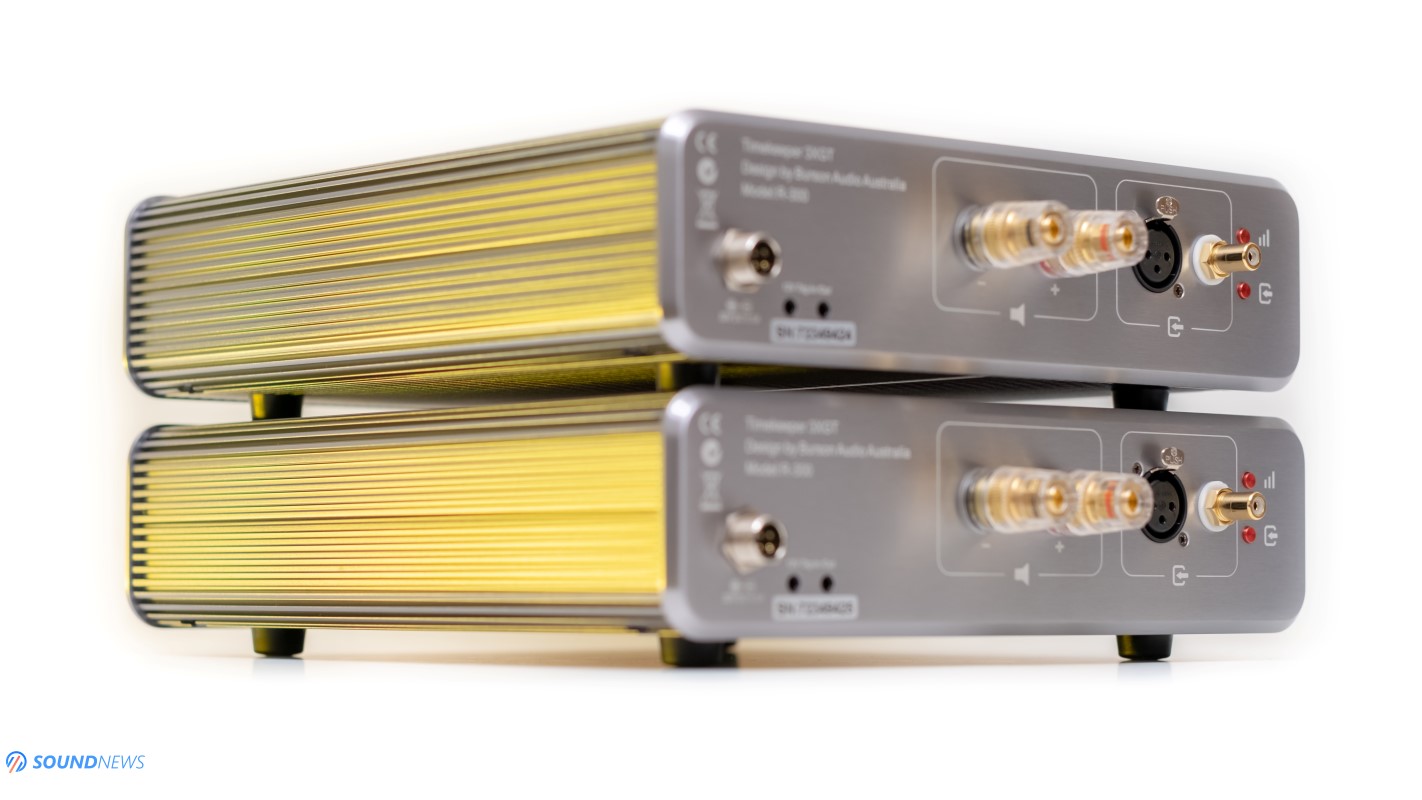
VIII. Treble
The treble region felt precise, clean ’n sharp and it was changing a lot depending on the tunes. KEF’s Reference 3 are already defined in here, add a higher treble presence and the tonal balance goes to the garbage bin. Luckily, that didn’t happen and this is where it felt similar to my own AHB2 power amps that were showing the tiniest details without raising the treble output to dangerous levels. I’m glad to report that Burson didn’t push the treble energy to the bright side, nor limit it any way. Sometimes I found it sharp and contoured on tracks filled with bells, cymbals and tambourines, but I didn’t find all that edgy or sibilant sounding. I find the treble region extended past top-octave and you can hear that loud and clear, without too much hassle. I enjoyed listening to my older rock tunes at higher volumes as the sound wasn’t breaking up. These were equality impressive at low-level listening and when I was pushing them to their upper power limits. KEF Reference 3 are some of the cleanest loudspeakers I tried at my place, but in a wrong setup where system matching wasn’t taken seriously, they can sound metallic and dull. Put them into a natural sounding rig and they will start showing a smiley face, while maintaining a highly transparent nature. In my view, Timekeeper GT was a match made in heaven with both my loudspeaker sets, providing a great set of technicalities, while keeping at bay all the nasty ringing.
Overall, I would describe them as overly excited and punchy sounding in the bass, thick and full-bodied in the midrange, while having a great treble extension.
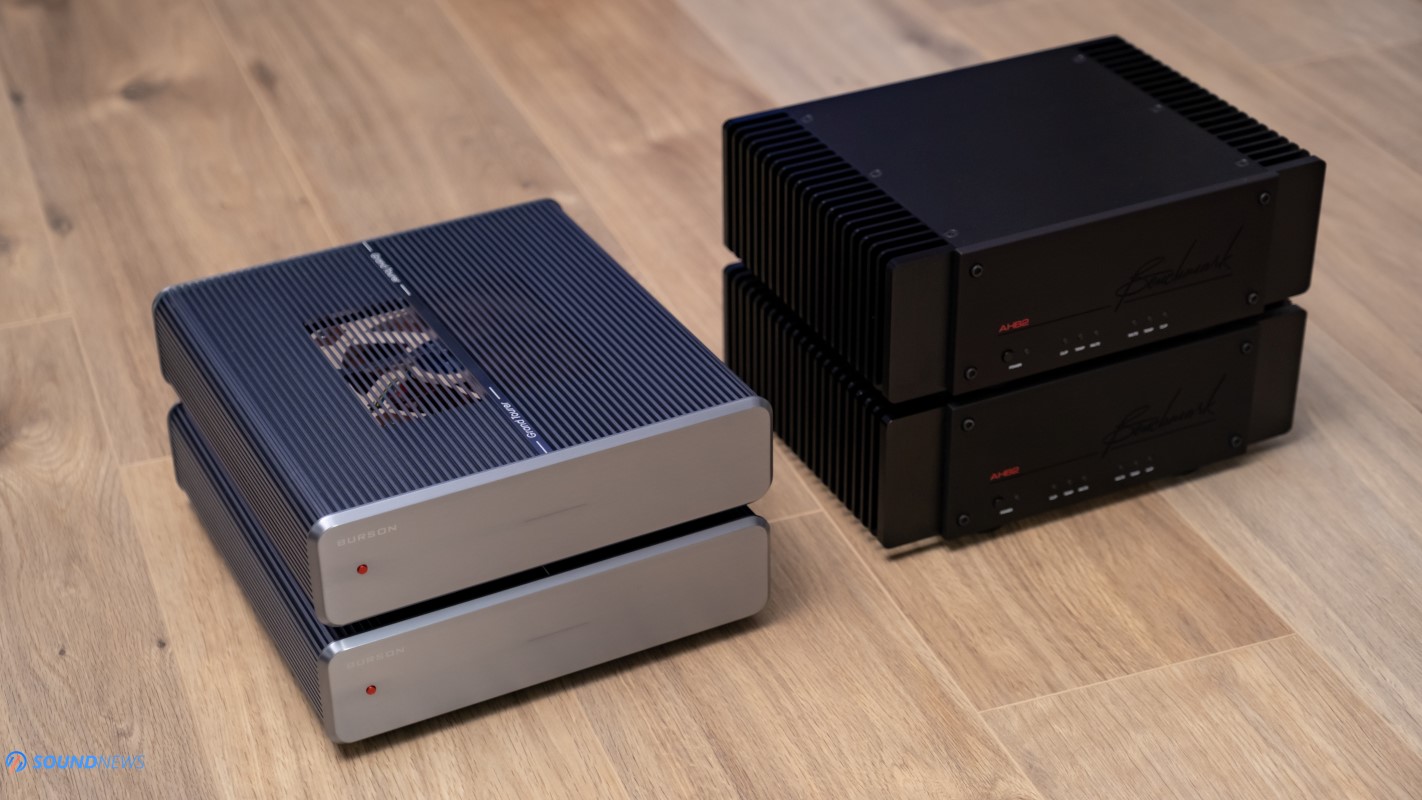
IX. Comparisons
Burson Timekeeper 3X GT ($4000) VS Benchmark AHB2 X2 ($6000)
Build quality wise, while the GTs are much sexier and easier to set, the build quality and understated look of AHB2 are more to my liking. Benchmark used thicker aluminum plates; their power supplies are sitting inside their cases; these don’t generate as much heat and there aren’t active fans running inside. AHB2 seem to be built at higher standards, they have more protection systems in place, they have three gain positions (versus two on the GT) and they can work in either stereo or mono mode. While both are extremely compact and lightweight, AHB2 are costlier and that was reflected in their build quality.
I won’t describe their inner workings and everything that makes them tick, as you have a dedicated article for the Benchmark AHB2 right here. While AHB2 are using plenty of discrete components and a few transistors per channel, some of the biggest highlights are their THX-AAA Achromatic Audio Amplifier modules that are using noise shaping techniques that are killing the noise more effectively. Burson uses beefy 210W Super Chargers and with five Max Current Power Supplies per unit – which are also killing the noise, without using noise shaping techniques.
On paper Timekeeper GT are providing considerably less power (110 Watts in 8 Ohms VS 380 Watts on two AHB2), but when music started playing, I couldn’t feel a massive difference volume wise. What was 62 on the AHB2, was 65 (out of 100) on the Timekeepers. That’s a very small difference, strengthening my claims that Timekeeper GT will drive pretty much anything, including low-sensitivity speakers. I don’t know how Burson measured the power output or what’s exactly at play…but they feel more powerful to me. I was far away from reaching their full output, as there was a massive headroom always remaining on tap.
When Pâna Când Nu Te Iubeam by Pink Martini (Qobuz / Tidal) started playing via AHB2, everything felt corect and extremely defined, but ultimately…emotionless. There was a massive amount of information coming forward, some might say that too much information was being revealed by AHB2. The sound was clean and oh so transparent, but everything felt lighter weight…lacking oomph, body and soul. This track should grab my body and envelop me fully with emotions…sadly, that moment didn’t arrive as the overall performance felt too linear for my liking. When I swapped them with the GTs, there was an immediately change in tonality. More bass energy was oozing from both sets of speakers, a weightier midrange was felt immediately, while getting the same treble output. Their resolving capabilities felt similar and the final outcome wasn’t artificial or forced. Burson amps were detailed enough, without stealing my full attention, letting me relax and disconnect from the real world. Another surprise was everything that had to do with scale. What was already a well-spread and well positioned sound on AHB2, felt taller, deeper and wider on the Burson amps. With such an amazing track, the difference wasn’t small at all. China’s voice was coming from behind the wall, like my listening spaced expanded on all axes, while via AHB2 her voice was coming from in between my speakers. AHB2 were never known to be massive and bigger than life sounding and this is where Burson Timekeeper GT impressed me more. There isn’t only a bigger soundstage, but a better layering as well, which transformed a three-dimensional sound into a holographic one.
When Rumble of Thunder by The HU (Qobuz / Tidal) started playing, I’ve immediately felt a faster pace of the AHB2, as it was by a hair nimbler on its feet. This is Mongol sent tremors into my room, that bass was felt not only with my chest, but with the entirety of my body. AHB2 are rocking pretty hard with rock music…but again, its midrange performance made those guitars less zingy or wild sounding to me. Everything felt precise, ultra-clean, but ultimately clinical sounding, without putting an accent anywhere in the frequency response. When Timekeeper GT started playing, I’ve felt harder punches hitting my chest, at the expense of a slower sound propagation. While AHB2 were faster but lighter weight, GTs were harder punching, while losing a little bit of speed. The tremors were even more powerful, that I needed to gently lower the volume as the bass output was overshadowing a small portion of the midrange. Horse-head fiddle and bass guitars plucks felt purer, a little raw and unpolished, but so incredibly alive and @ss-kicking. A higher engagement factor was coming from the GTs, as these tracks felt energized. There wasn’t even a contest, as in my view Timekeeper GT are doing a better job in conveying everything that Mongol warriors are doing on stage. Tengri will be pleased with such an amazing performance.
When Doin’ it Right by Daft Punk (Qobuz / Tidal) appeared on my playlist, I refused to power on the AHB2 duo, as everything I want from an electronica album is done better via the GTs. There a stronger bass output that will better pressurize the listening room, there’s a bigger soundstage and lastly, everything is livelier sounding to me. There were a few occasions when I felt that bass output is a little too much for my room, but that felt only because I didn’t finish with the acoustic treatment. AHB2 was lowering the bass output and subsequently, it wasn’t as (over)powerful and thumpy sounding to me. AHB2 was definitely more linear and straight as a line and Timekeeper GTs could be described as a little more playful and colored sounding.
In the end, AHB2 were better at pulling higher amounts of information and I find them a little faster sounding as well. When I’m reviewing digital sources of all sorts, AHB2 seems like a better tool when evaluating such units, side-stepping and trying to get out of the way. AHB2 are the definition of a wire-with-gain amplifier, without coloring or interfering with the sound in any way. Timekeeper GT on the other hand were bringing more air in between the notes, music was breathing easier as everything felt decompressed and placed beautifully around the room. Bass and midrange felt fuller and weightier and that can have a beneficial effect on most bookshelf speakers that are lacking body and bass extension.
I wanted to highlight that these are different sounding amplifiers in every possible way and they both have strengths and weaknesses. While these are doing things differently, I actually find them on the same level and that works in favor of Aussie amps, as these are by $2000 cheaper. With my loudspeakers and listening habits, I will be choosing the GTs anytime of the day, questioning if I still need the Benchmarks around the house. I will be reaching to AHB2 only when comparing a few DACs and loudspeakers, limiting their usability and that’s why I’m already thinking in parting ways with AHB2, trying a few more amps in the comfort of my home.
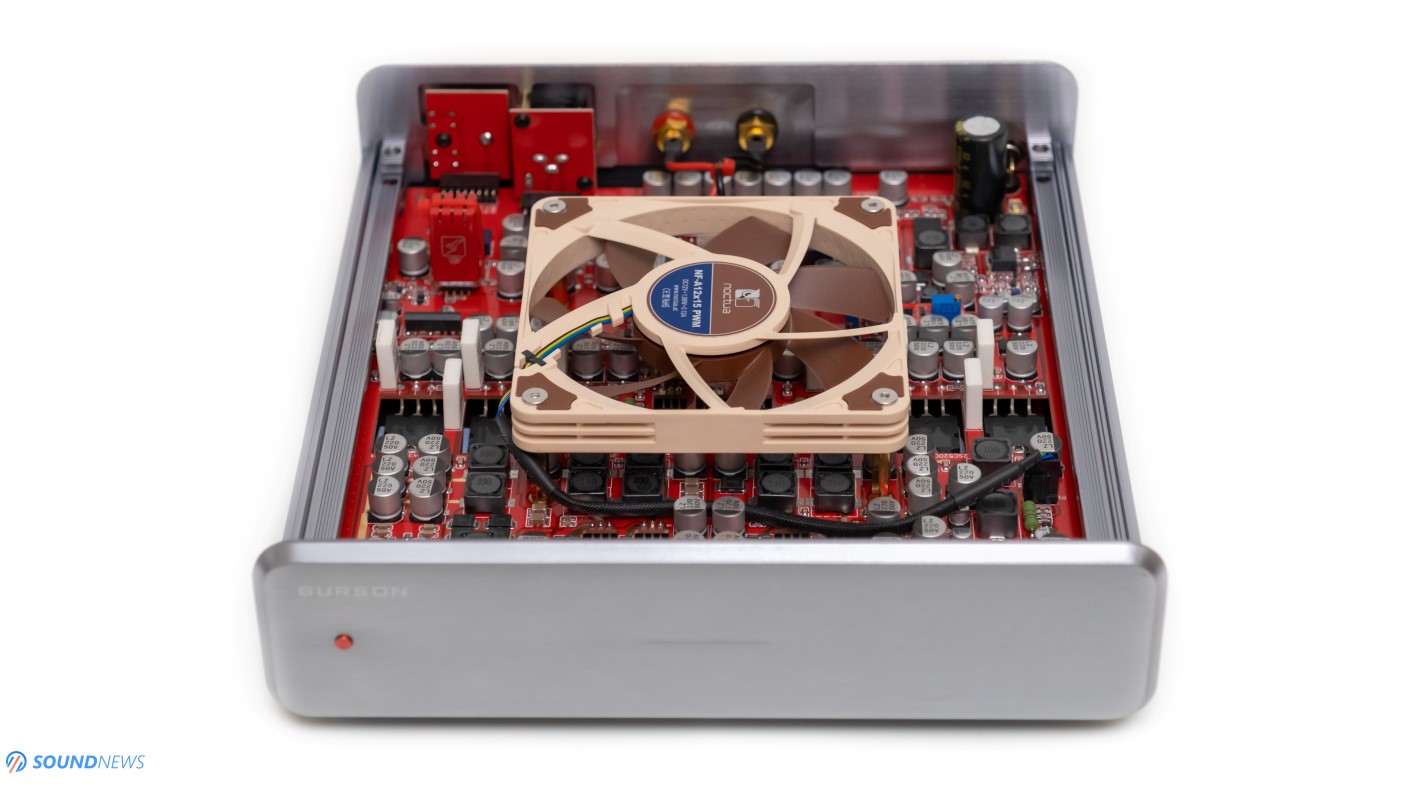
My Conclusion
I can’t explain you why, but I like audio components that are doing one single thing very well. I still use all-in-one units that have a massive WAF attached to them, but when I want a no-compromise sound, then going with separates feels like the only option. Timekeeper GTs don’t have a DAC section, a preamp, a headphone amp and a Bluetooth receiver. Instead, we’ve got the cleanest, most transparent, most powerful and punchiest Burson made amplifiers to date. While these are highly technical, noiseless, ultra-revealing and fast, these can still sound highly engaging, always trying to make me move to the rhythm of the music. This review took me so long to finish as when music started playing, I would leave my notes aside and have a two-hour listening session that would increase my mood level for the rest of the day. I don’t find them dead-neutral or as others might describe as clinical sounding, these were far from that description, always trying to elevate that bass output by a few dB, while sweetening the midrange ever so slightly. I found them highly impactful and incredibly dynamic sounding and that shouldn’t come as a surprise knowing that went inside their cases. I’m a strong believer in Class A / AB amplifiers and I have no desire to use highly efficient Class-D amplifier anytime soon. A day will come when a Class D amp will change by old preconceptions, but that will be a story for another day.
I’m yet to experience a similar control of the lowest octaves, a similar technical performance without becoming thin or bright sounding. These fully preserved the soul of the music and I found them well-balanced, providing an excellent tonality. You might have a small issue when matching Benchmark AHB2 with linear sounding loudspeakers, but that wouldn’t be a problem with Burson’s Timekeeper GT.
In my view, these performed like proper high-end dual-mono power amplifiers and in my view, these performed higher to their asking price, punching way above their weight and for all of the things combined, they fully deserved my absolute highest Gold Award! Congratulations to the team and I’m looking forward to their next doings.

You can get them directly from their web-store right here, or you can contact your local Burson Audio distributor for a listening session. In case you are getting them, please leave a comment below and let me know how these are treating you.
PROS:
- Rock solid build quality, unique casework that doubles as a giant heat-sink
- Smaller footprint to your usual dual mono amps
- Lightweight and small enough to be used in tiny stereo setups
- Good selection of analog inputs and outputs
- Plenty of power under their hoods, if they can drive a pair of KEF Reference 3, they can drive everything
- These are lacking any form of noise and distortion
- Detail-oriented and highly resolving
- Impressive transient response, these two were pushing and pulling dynamics like crazy
- Fairly neutral sounding, putting a small accent on the low-end delivery
- Technical sounding amps on all accounts
- Holographic and expansive sounding, one of the biggest stages I’ve experienced with my loudspeakers
- Accurate imaging with precise location of the notes
- Extended frequency response at both ends of the spectrum
- Tight and controlled, even when going overboard on the volume
- These are going with an organic music reproduction
- Could be your last power amplifiers
- A very good value
CONS:
- Active cooling might put off potential customers, although I don’t find the distracting at all
- Using them with Cool Stands is mandatory for a better heat dissipation
ASSOCIATED EQUIPMENT:
- DACs: Chord Electronics Dave, Gustard R26 Discrete, Audiobyte HydraVox & HydraZap, Musician Aquarius, Gold Note DS-10 Plus & PSU-10 EVO, Ferrum ERCO, Shanling EM7
- DAPs: Hiby RS6, RS2, FiiO M17, M11 Plus ESS, Shanling M7, M6 Ultra
- Headphone Amps: Trafomatic Primavera, Trafomatic Head2, Enleum AMP-23R, Ferrum OOR + Hypsos, Flux Lab Acoustics Volot, Burson Audio Soloist 3X GT, several Topping, SMSL & Gustard units
- Preamps: Musician Monoceros
- Integrated Amps: Enleum AMP-23R, Burson Timekeeper 3i
- Power Amps: Burson Timekeeper 3X GT (x2), Benchmark AHB2 (x2), Chord Electronics Ultima 5
- Loudspeakers: KEF Reference 3, Sound Of Eden Crescendo UNO
- Full-sized headphones: Hifiman Susvara, HE1000SE, Arya Stealth, Audeze LCD-5, LCD-4, Sennheiser HD800S, Erzetich Phobos V2021, Phobos V2018, Erzetich Mania, Kennerton Rognir, Magni, Gjallarhorn, Vali, M12S, Apos Caspian, Sendy Peacock, Apollo, Aiva & others
- IEMs: FiiO FH9, FH7, FA9, FD7, Meze Rai Penta, LittleDot Cu KIS, Kinera Skuld, 7Hz Timeless & others
- Interconnects: QED Reference (x2), Topping TCX1 (x2)
- Speaker cables: Kimber PR8, Audioquest Type4
- Power Cables: Isotek EVO3 Premier (x3), iFi Audio SupaNova (x2)
- Balanced Isolation Power Conditioners: PLiXiR Elite BAC1500 (stereo setup), Elite BAC400 (headphone setup)
